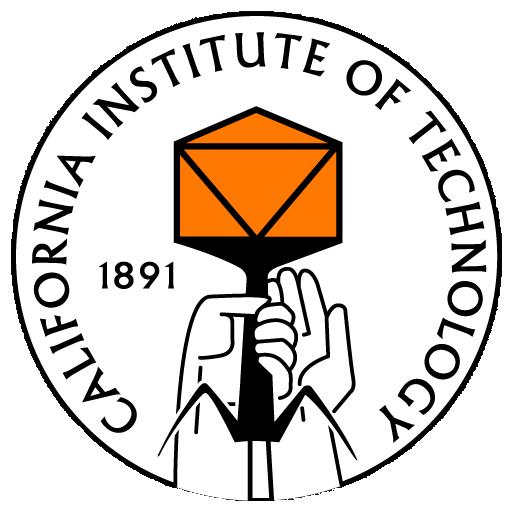Caltech/Project
From 2007.igem.org
| Line 11: | Line 11: | ||
==<center>Project Background</center>== | ==<center>Project Background</center>== | ||
| - | + | [[Caltech/Project/phage|Introduction to Bacteriophage λ]] | |
| - | [[ | + | |
| - | + | ||
| - | + | ||
==<center>Project Details</center>== | ==<center>Project Details</center>== | ||
| Line 20: | Line 17: | ||
The project consisted of five individual parts, each assigned to one team member, and categorized into one of three independent principles underlying the project: | The project consisted of five individual parts, each assigned to one team member, and categorized into one of three independent principles underlying the project: | ||
| - | * [[ | + | * [[Caltech/Project/Recombineering|Recombineering]] the cro, N, and Q amber mutation genes into lambda zap |
| - | * [[ | + | * [[Caltech/Project/Riboregulator|Riboregulator]] design and testing |
| - | *Titering [[ | + | *Titering [[Caltech/Project/Cro|Cro]], [[Caltech/Project/N|N-antiterminator]], and [[Caltech/Project/Q|Q-antiterminator]] construct-containing bacterial to test construct-mediated rescue of lytic activity (in amber phage) |
==<center>Current Status</center>== | ==<center>Current Status</center>== | ||
As the recombineering, testing of riboregulators, and titering processes will take place concurrently, we needed to find a simpler way to regulate viral protein concentrations in the cells. To this end, ''E. coli'' strains have been constructed that contain a low-copy plasmid construct where one of three key developmental viral genes - coding for the cro, N, or Q proteins - is regulated by a tetracycline-dependent promoter. A constitutive promoter (J23100, the stronger promoter, or J23116, the weaker one) produces a steady stream of tetracycline repressor (tetR), which substitutes for the cis repressor in repressing protein levels. The addition of anhydrotetracycline (aTc, acting as the trans activator) inactivates the tetracycline repressor and leads to the production of the respective viral protein in the ''E. coli'' cells. This allows us to control the concentration of viral protein produced in the cells by adding varying amounts of aTc to the bacterial growth media. | As the recombineering, testing of riboregulators, and titering processes will take place concurrently, we needed to find a simpler way to regulate viral protein concentrations in the cells. To this end, ''E. coli'' strains have been constructed that contain a low-copy plasmid construct where one of three key developmental viral genes - coding for the cro, N, or Q proteins - is regulated by a tetracycline-dependent promoter. A constitutive promoter (J23100, the stronger promoter, or J23116, the weaker one) produces a steady stream of tetracycline repressor (tetR), which substitutes for the cis repressor in repressing protein levels. The addition of anhydrotetracycline (aTc, acting as the trans activator) inactivates the tetracycline repressor and leads to the production of the respective viral protein in the ''E. coli'' cells. This allows us to control the concentration of viral protein produced in the cells by adding varying amounts of aTc to the bacterial growth media. | ||
| - | * [[ | + | * [[Caltech/Project/Constructs|Explanation of Construct]] |
| - | * [[ | + | * [[Caltech/Project/Construct List|List of Cloned Constructs]] |
| - | + | ||
Titering experiments where cro, N, and Q amber phages were allowed to infect D1210 cells containing the built construct show that heterologous N and Q can complement phages with amber mutations in the respective genes. Adding a cis-repressor to the Q construct lowered production of Q even further, as it eliminated lysis completely. We were unable to express sufficient cro from a plasmid to rescue lytic behavior of the amber cro mutant phage. | Titering experiments where cro, N, and Q amber phages were allowed to infect D1210 cells containing the built construct show that heterologous N and Q can complement phages with amber mutations in the respective genes. Adding a cis-repressor to the Q construct lowered production of Q even further, as it eliminated lysis completely. We were unable to express sufficient cro from a plasmid to rescue lytic behavior of the amber cro mutant phage. | ||
| - | * [[ | + | * [[Caltech/Project/Titering Results|Summary of Titering Results]] |
| - | + | ||
Multiple riboregulator designs are being tested (for both activation and repression levels), and successful designs will be cloned into the plasmid constructs. So far, cis construct number 3 and its accompanying trans combinations (cis3trans1 and cis3trans2) seem the most promising. Phages resulting from the recombineering process are also being screened for successful N and Q amber mutants. | Multiple riboregulator designs are being tested (for both activation and repression levels), and successful designs will be cloned into the plasmid constructs. So far, cis construct number 3 and its accompanying trans combinations (cis3trans1 and cis3trans2) seem the most promising. Phages resulting from the recombineering process are also being screened for successful N and Q amber mutants. | ||
| - | * [[ | + | * [[Caltech/Project/Riboregulator Results|''Trans'' Activation Data]] |
| - | + | ||
==<center>Future Work</center>== | ==<center>Future Work</center>== | ||
Revision as of 22:29, 26 October 2007
iGEM 2007
Home
Highlights
Project
People
Protocols
|
